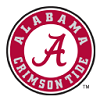Some tools are just poor quality based on good design. This brings to mind a certain smoothing plane from Lowes smeared with blue paint that is more of a hassle than it's worth to get going. But it's based on good design.
Then there are tools that even though are good quality are just poor in design or performance. When thumbing through a Stanley catalog it seems like they had a tool for any problem you could think of, and while they may be made well, the design is just more of a headache than the problem you are trying to solve.
Which brings me to my most hated tool in my shop.
The Yankee screwdriver.
il_570xN.1758522467_t90i.jpg
Now, maybe I just suck at using it, or maybe I don't know how to use it, but when this tool came through my shop threshold I gave it the old college try to make it work.
When using the flat head attachment it came with, I found the thing jumped out of the head or marred up the slot too many times. It doesn't have a lot of torque and if you aren't holding the thing with surgical precision inline with the screw, well, good luck. I spent more time trying to get the thing working than it takes to drive one in with a brace. I was drilling pilot holes but it was still a pain in the neck. The bit and brace or even a good old fashioned screw driver I find to be a much more controlled and better tool.
This may be different is I had an attachment for a Phillips or a torx screw, but mine only has a straight slot attachment.
The Yankee drill on the other hand, is a great fast little drill for making pilot holes on hinges or finish nails.
Does anyone enjoy using this screwdriver, or at least have tips to get one to work? They sold a lot of them, so I am willing to bet maybe I am doing something wrong.
What is the most hated tool, by design, in your shop?





 Reply With Quote
Reply With Quote








